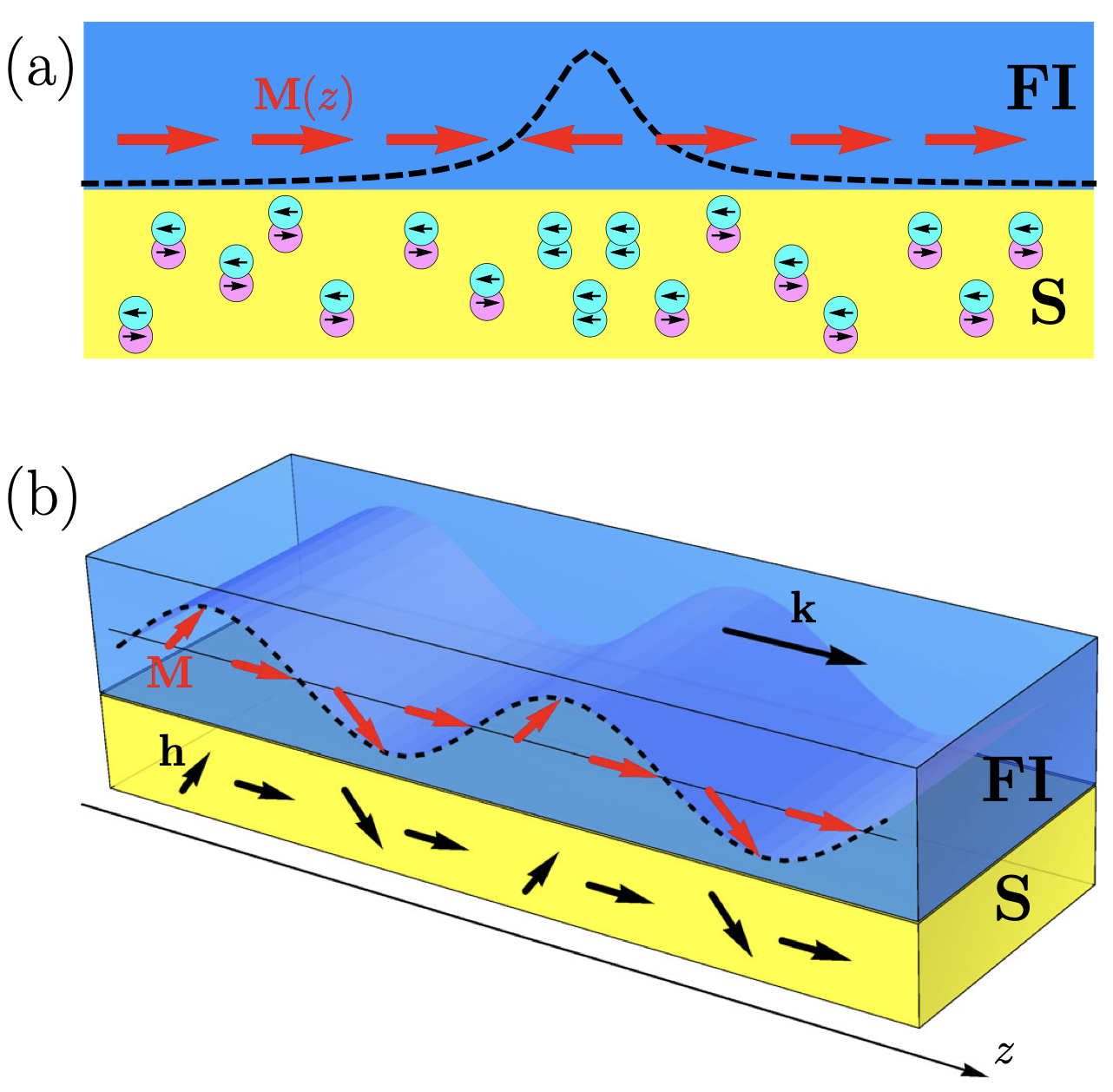
Magnon-Cooparons in magnet-superconductor hybrids
Generation and detection of spinful Cooper pairs in conventional superconductors has been intensely pursued by designing increasingly complex magnet-superconductor hybrids. Here, we demonstrate theoretically that magnons with nonzero wavenumbers universally induce a cloud of spinful triplet Cooper pairs around them in an adjacent conventional superconductor. The resulting composite quasiparticle, termed magnon-cooparon, consists of a spin flip in the magnet screened by a cloud of the spinful superfluid condensate. Thus, it inherits a large effective mass, which can be measured experimentally. Furthermore, we demonstrate that two magnetic wires deposited on a superconductor serve as a controllable magnonic directional coupler mediated by the nonlocal and composite nature of magnon-cooparons. Our analysis predicts a quasiparticle that enables generation, control, and use of spinful triplet Cooper pairs in the simplest magnet-superconductor heterostructures.
I.V. Bobkova, A.M. Bobkov, A. Kamra, W. Belzig
Commun Mater 3, 95 (2022)
